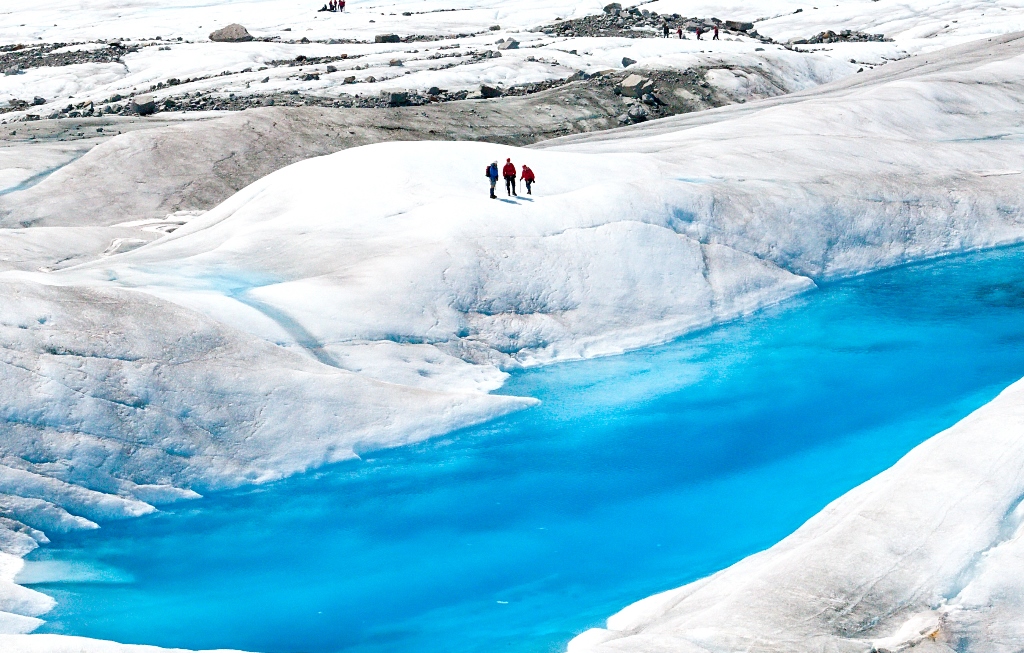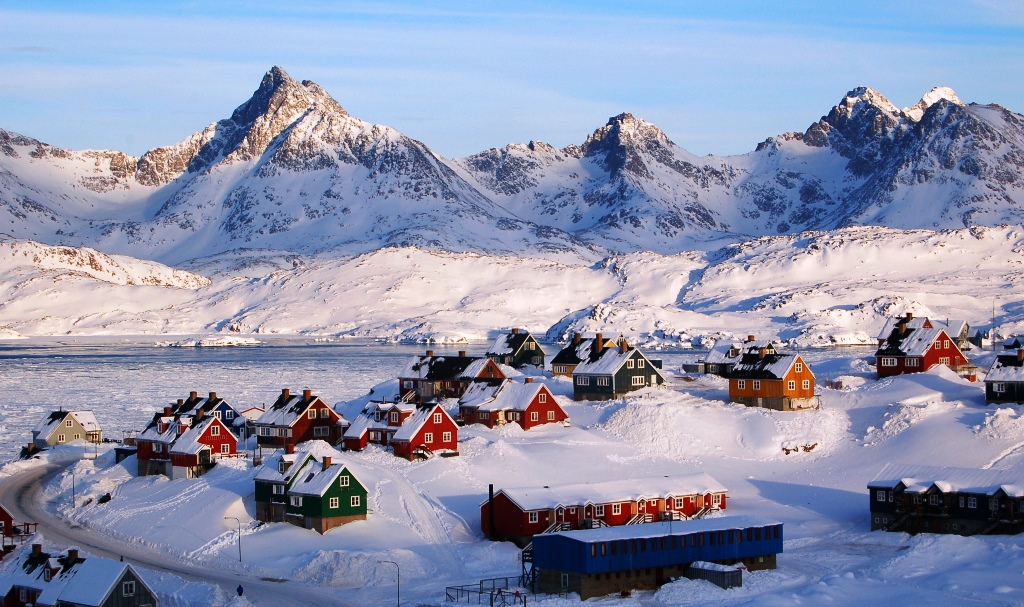- Land of the Bear – The name Arctic comes from the word ‘Arktikos’, which is Greek for ‘bear’. This is because the Great Bear constellation (Ursa Major) is seen in the northern sky. It is a polar region located in the northernmost part of the Earth.
Recommended reading by Adventure Nation.
Fish-eye lens view of sea ice off the coast of Spitsbergen (Svalbard Islands) - Midnight Sun – Most of the Arctic and the North Pole has almost six months of light each year, beginning around April. In the summer there is almost 24 hours of sunlight and it is exactly the opposite in the winter. The phenomenon is called Midnight Sun and occurs around the solstice (June 20-22). The number of days with a likely Midnight Sun increase the farther you go towards the pole. Similarly there are Polar nights in winters.
Watch this fascinating short time lapse film shot in the month of June to give you an idea about how days look like in the Arctic in peak summers.
Sun atop icebergs in Iceland - Freezing Cold – Arctic’s climate is marked by cold summers and even colder winters. Eight countries extend into the Arctic: Greenland, Iceland, Norway, Sweden, Finland, Russia, Canada and the USA (Alaska). The coldest temperature recorded in the Arctic is around -68°C in Siberia. Norilsk, Russia (located in the Arctic) is the most northern city in the world with an average temperature of 20 degrees below 0.

Siberian Huskies - On Thin Ice – It is believed that if all the ice in the Arctic melted, the global sea level would rise by approximately 24 feet! In recent years, the Arctic region has begun to shrink owing to global warming. Many experts have voiced that the Arctic being ice free is something that could happen in a future not too distant! The ice in the Arctic is its most crucial dimension. The miles of glaciers replenish the ocean as it gets warmer and that in turn gives gallons of water to drink. This supports animal life in the region.

Blue ice pools on Mendenhall Glacier in Juneau, Alaska - Area – Covering an area of 5.4 million square miles, the Arctic Ocean is bigger than Europe. The line of the Arctic Circle is close to 1,650 million square miles south of the North Pole.
- Fauna – In spite of the subzero temperatures and harsh climate there is a robust animal life thriving here.
The Polar Bear, the king of the arctic with a layer of blubber to keep it warm, is just perfect for the Arctic. Other animals include the Caribou also known as the Reindeer, Arctic Wolf, Arctic Hare, Snowy Owl, Canada Lynx, Tundra Swan, Red Fox, Siberian Husky and also the Great Auk which became extinct around the 1800s. There is also the Wolverine! About the size of the bear cub, wolverine is a strong animal common in Nunavut.
Arctic Animals (Clockwise L-R): Polar Bear, Snowy Owl, Arctic Fox, Reindeer, Arctic Hare, Walrus. Grey Whales migrate 12,500 miles from the Arctic to Mexico and back every year. Narwhal, Seals and Walrus are the most commonly found water mammals here.
- Where the Eskimos live – For thousands of years humans have inhabited the Arctic. The earliest inhabitants are referred to as the Arctic small tool tradition and existed around 2500 BC. Roughly four million people live there currently, including more than thirty different indigenous people also known as the Eskimos and also Caucasians.

Town of Tasiilaq in East Greenland - No Government – The Arctic region does not have a single governing body. There is an intergovernmental forum called The Arctic Council that works to elevate cooperation, coordination and interaction among the eight sovereign states (Canada, Greenland, Finland, Iceland, Norway, Russian Federation, Sweden and the United States) and the indigenous people living in the region.




Comments